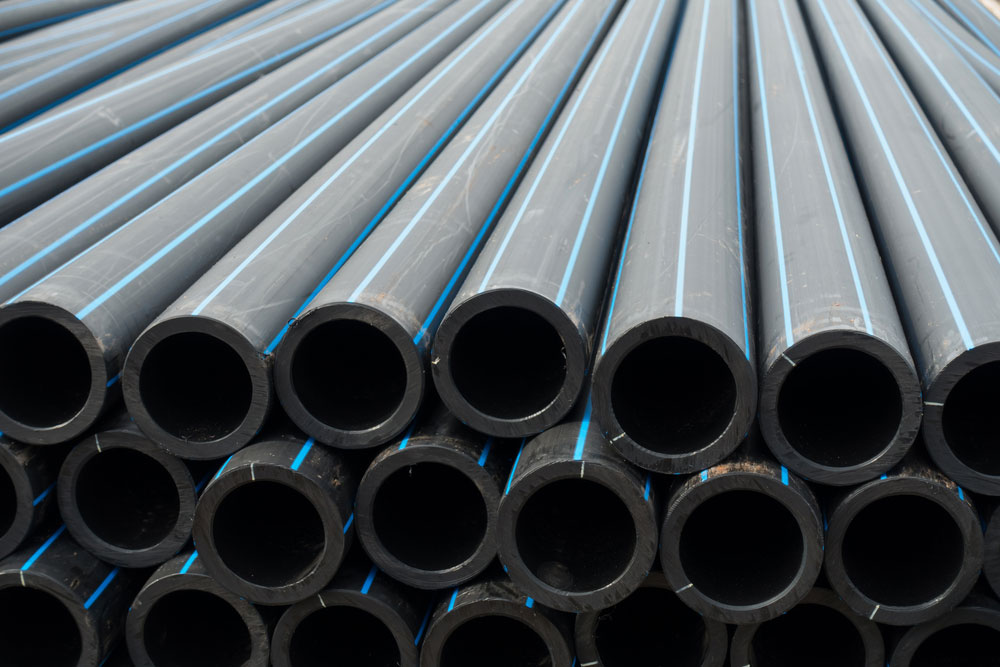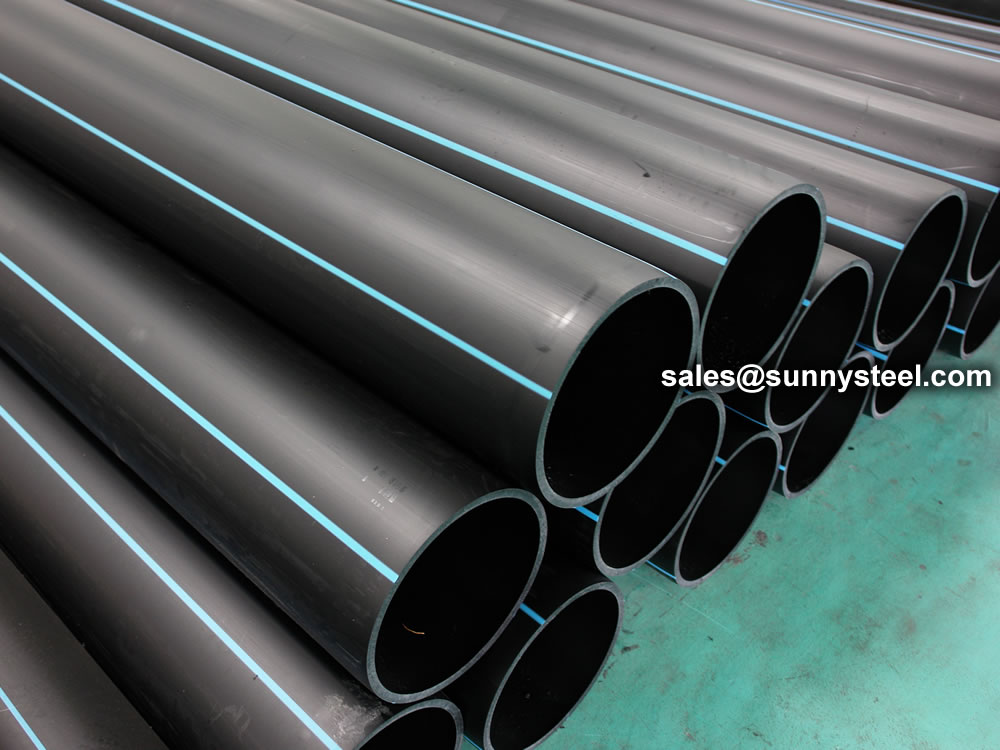The Definitive Handbook to Pipe Manufacturing Midland TX for Industrial Needs
Wiki Article
Explore the Manufacturing Refine Behind High-Quality HDPE Pipeline and Its Applications
The production procedure of high-grade HDPE pipes is elaborate and methodical. It begins with the selection of resources that improve performance. Following this, ethylene goes through polymerization to develop material, which is then shaped via extrusion. Quality assurance is paramount, making sure that the end product fulfills rigorous criteria. The trip of HDPE pipelines doesn't finish with manufacturing. Their applications throughout various industries reveal a broader significance worth analyzing.Understanding HDPE: Features and Advantages

High-density polyethylene (HDPE) is a versatile polycarbonate understood for its sturdiness and resistance to numerous ecological elements. This material exhibits excellent tensile toughness, making it suitable for requiring applications. Its low-density structure adds to a lightweight product, facilitating simplicity of dealing with and installation. HDPE additionally showcases remarkable resistance to chemicals, which minimizes deterioration when revealed to severe substances.
The material's reduced moisture absorption even more boosts its durability, making it ideal for use in pipes and tank. In addition, HDPE is immune to ultraviolet (UV) radiation, making sure that items keep their honesty also when exposed to sunlight. Its versatility permits for the creation of complex forms without endangering strength. The green nature of HDPE, commonly originated from recycled materials, includes to its charm, promoting lasting practices in production. In general, these residential properties and benefits make HDPE a favored option for different commercial and customer applications.
Resources Option for HDPE Manufacturing
The choice of raw products for HDPE production is necessary to validate the last item satisfies the preferred specs and high quality requirements. High-density polyethylene (HDPE) is mainly created from polymerized ethylene, stemmed from fossil gas such as all-natural gas or petroleum. The quality of these feedstocks substantially influences the mechanical and thermal residential or commercial properties of the last HDPE.Additives likewise play a significant role in boosting HDPE's performance, consisting of anti-oxidants, UV stabilizers, and colorants, which boost resilience and resistance to environmental factors. The option process have to consider not just the chemical structure of the raw products yet likewise their processing attributes to guarantee reliable manufacturing.
The sourcing of raw materials ought to focus on sustainability and conformity with environmental regulations, as liable practices are necessary in today's market. Eventually, mindful resources selection lays the structure for creating premium HDPE pipes appropriate for varied applications.
The Extrusion Refine: Shaping HDPE Pipeline
The extrusion process plays an important duty in shaping HDPE pipelines, starting with precise material prep work strategies that guarantee excellent circulation and uniformity. Just as crucial is the layout of the die, which straight influences the final dimensions and surface high quality of the pipe. Together, these factors contribute considerably to the performance and quality of HDPE pipe manufacturing.Product Prep Work Techniques
Efficient manufacturing of HDPE pipelines begins with meticulous material prep work strategies, particularly the extrusion process. During this phase, high-density polyethylene resin is very first dried out to remove dampness, ensuring excellent circulation attributes. The material is then fed right into the extruder, where it undergoes heating and melting, transforming into a viscous state. This heating process is thoroughly controlled to preserve the material's integrity and performance. The liquified HDPE is compelled via a die, shaping it into a continuous pipe form. Correct temperature management during extrusion is vital, as it directly impacts the material's homes and the end product quality. When shaped, the HDPE pipeline is cooled and cut to specified lengths, ready for succeeding handling and applications.Die Layout Relevance
Accuracy in die design plays a necessary duty in the extrusion procedure of HDPE pipelines. The die serves as the final shaping device, directly influencing the pipeline's dimensions, wall surface thickness, and surface coating. A well-designed die warranties consistent product flow, minimizing issues such as irregularities and vulnerable points. The geometry of the die have to be enhanced to suit the certain residential or commercial properties of HDPE, including its thickness and thermal habits throughout extrusion. Furthermore, the cooling price of the material as it travels through the die can substantially affect the pipe's structural stability. Spending in innovative die modern technology is vital for makers intending to produce top quality HDPE pipes that fulfill industry requirements and consumer expectations.Quality Control Procedures in HDPE Production
Although numerous factors influence the high quality of HDPE pipeline production, reliable top quality control measures are critical to guarantee consistency and dependability in the final product. Key quality control practices include rigorous product assessment, confirming that the raw polyethylene fulfills recognized standards for purity and thickness. During the extrusion procedure, specifications such as temperature level, stress, and cooling time are carefully kept track of to preserve dimensional accuracy and architectural stabilityOn top of that, post-production testing is vital; makers commonly carry out hydrostatic examinations to examine the pipe's strength and resistance to stress. Visual evaluations for surface issues better enhance top quality assurance. Qualification from appropriate standards companies, like ASTM or ISO, offers an added layer of trustworthiness. By executing these comprehensive top quality control measures, producers can decrease problems, enhance efficiency, and ensure that the HDPE pipelines satisfy the particular needs of various applications, inevitably bring about customer satisfaction and rely on the item.
Applications of HDPE Pipeline Across Industries
HDPE pipes are used throughout various fields because of their sturdiness and flexibility. In water distribution systems, they guarantee effective distribution, while in wastewater monitoring, they supply dependable options for waste transportation. Furthermore, farming watering networks take advantage of HDPE's resistance to deterioration and flexibility, making it an ideal option for modern farming techniques.
Water Circulation Solutions
A significant variety of markets rely upon high-density polyethylene (HDPE) pipelines for reliable water circulation systems. Understood for their durability and resistance to rust, HDPE pipelines are widely used in community water supply networks, agricultural irrigation, and industrial applications. Their light-weight nature helps with simple handling and setup, lowering labor prices and time. In addition, HDPE pipes can fit different stress levels, making them appropriate for both reduced and high-pressure systems. Texas hdpe pipe manufacturer. The versatility of the material permits smooth assimilation right into existing framework, minimizing the need for substantial excavation. In addition, HDPE's resistance to chemical leaching guarantees that the water supplied remains safe and tidy, making it an ideal choice for maintaining the top quality of potable water across different fieldsWastewater Administration Solutions
Efficient water circulation systems also pave the means for cutting-edge wastewater management services, where high-density polyethylene (HDPE) pipes play a substantial duty. Renowned for their durability here and resistance to rust, HDPE pipes are optimal for transporting wastewater in various settings. Their versatility permits very easy installment in complicated settings, minimizing the requirement for considerable excavation. Furthermore, HDPE's smooth indoor surface area reduces friction, improving circulation rates and efficiency. These pipes are additionally resistant to chemical leaching, making sure that contaminants do not compromise the surrounding atmosphere. Industries, municipalities, and therapy facilities significantly rely upon HDPE pipelines for their dependability and longevity, making them a favored choice for modern wastewater monitoring systems. This flexibility highlights the important importance of HDPE pipelines throughout numerous applications.Agricultural Watering Networks
Agricultural watering networks profit substantially from using high-density polyethylene (HDPE) pipes, which supply effective and reliable water distribution to crops. HDPE pipes are light-weight, making them very easy to transfer and install, while their flexibility permits for numerous arrangements in diverse terrains. These pipes demonstrate outstanding resistance to corrosion, chemicals, and UV radiation, making certain longevity in extreme agricultural environments. In addition, their smooth interior surface minimizes friction loss, maximizing water circulation and decreasing power costs related to pumping. The longevity of HDPE pipelines, commonly surpassing half a century, contributes to reduce maintenance and substitute expenses. Subsequently, farmers significantly depend on HDPE pipes to enhance watering performance and advertise lasting agricultural techniques, eventually leading to improved plant yields and source conservation.Future Patterns in HDPE Pipe Innovation
As the demand for sustainable and reliable facilities expands, improvements in HDPE pipe technology are poised to change various markets. Arising fads include the combination of smart modern technologies, such as sensors and IoT capacities, which help with real-time tracking of pipeline conditions, decreasing upkeep expenses and protecting against leaks. Furthermore, the advancement of innovative production techniques, such as 3D printing, is making it possible for the production of complex, personalized pipeline layouts that accommodate specific project requirements.In addition, the concentrate on recycling and circular economy practices is driving the advancement of HDPE pipelines made from recycled products, boosting sustainability. Boosted jointing approaches, such as electro-fusion and mechanical installations, are additionally enhancing setup effectiveness and dependability. Lastly, the expanding emphasis on ecological guidelines is pressing suppliers to adopt greener production processes, making certain that HDPE pipelines not just satisfy industry criteria yet additionally promote an even more lasting future for framework advancement.
Regularly Asked Concerns
How Does HDPE Contrast to Other Plastic Products?
HDPE exceeds many various other plastic materials relating to resilience, chemical resistance, and flexibility. Its reduced density and high tensile stamina make it ideal for different applications, often exceeding alternatives in both efficiency and longevity.What Are the Ecological Influences of HDPE Production?
The ecological influences of HDPE production consist of greenhouse gas emissions, power consumption, and prospective air pollution from manufacturing procedures. In addition, improper disposal can bring about soil and water contamination, increasing concerns regarding lasting ecological results.Can HDPE Pipeline Be Reused?
Yes, HDPE pipes can be reused. Numerous facilities approve utilized HDPE for processing, transforming it right into new items. This recycling contributes to sustainability efforts, decreasing plastic waste while preserving resources and power in the manufacturing cycle.What Is the Lifespan of HDPE Water Lines?

How Do Temperature Variants Impact HDPE Pipeline Performance?
Temperature variants substantially impact HDPE pipeline performance, impacting adaptability and stamina. High temperatures can result in softening, while reduced temperature levels might trigger brittleness, inevitably influencing the pipe's longevity and viability for numerous applications in varied settings.Report this wiki page